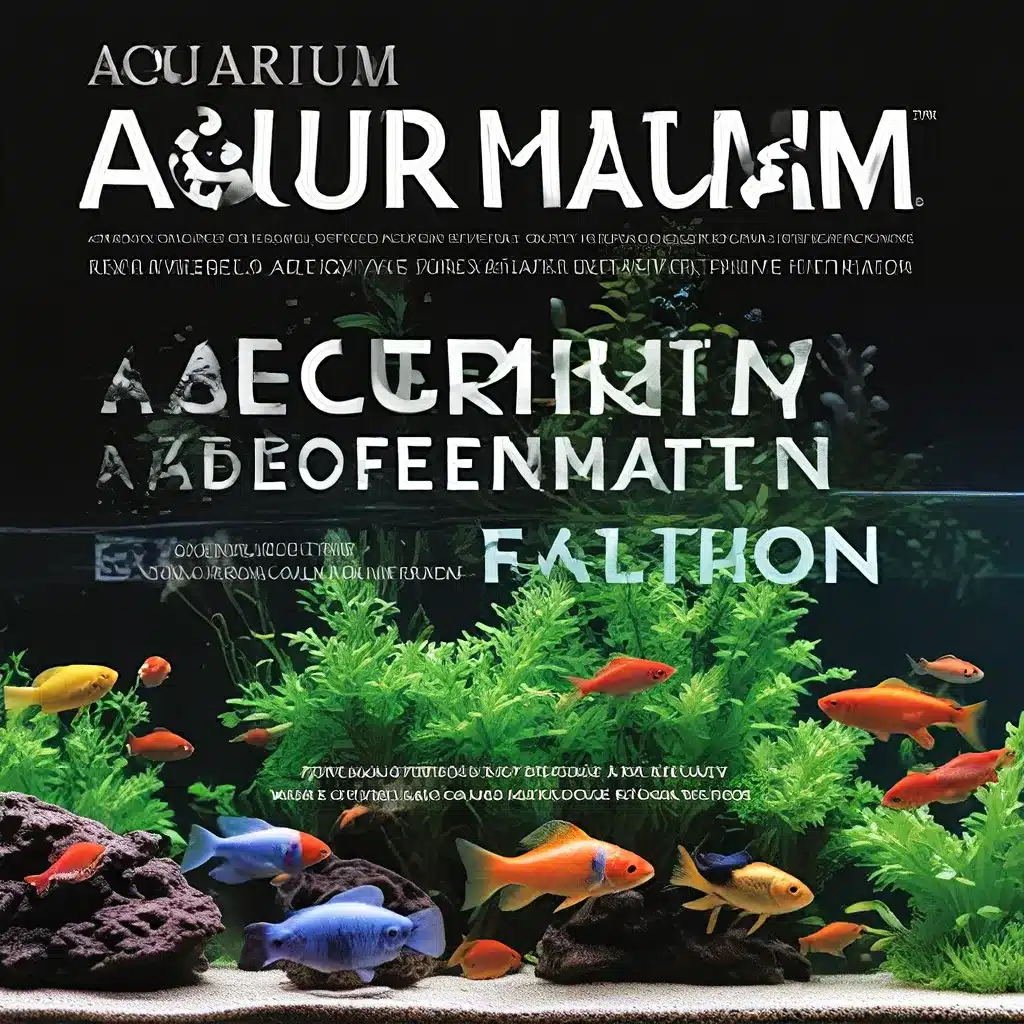
In the captivating world of aquarium keeping, few elements are as crucial as the delicate balance of water chemistry and the role of beneficial bacteria. These microscopic allies are the unsung heroes in the aquarium ecosystem, responsible for maintaining optimal water quality and safeguarding the health of our finned friends. As aquarists, unlocking the secrets of biological filtration can be the key to creating thriving, vibrant aquatic environments.
The Invisible Allies: Understanding the Role of Beneficial Bacteria
Beneficial bacteria are the cornerstone of a well-functioning aquarium. These tiny microorganisms are responsible for the nitrogen cycle, a crucial process that converts harmful waste products, such as ammonia and nitrite, into less toxic nitrate. By establishing a robust population of these beneficial bacteria, aquarists can ensure a stable and healthy environment for their aquatic inhabitants.
One of the primary functions of beneficial bacteria is nitrification, the process of converting ammonia into nitrite and then into nitrate. Ammonia, a byproduct of fish waste and decomposing organic matter, can be highly toxic to aquatic life. Beneficial bacteria step in to break down this harmful compound, converting it into nitrite, which is still toxic but less so than ammonia. The bacteria then continue the cycle, converting nitrite into nitrate, a form of nitrogen that is more readily absorbed by aquatic plants and less harmful to fish.
Optimizing Biological Filtration: Strategies for Success
Harnessing the power of beneficial bacteria requires a strategic approach to biological filtration. The key to success lies in creating an environment that supports the growth and proliferation of these essential microorganisms. Here are some proven strategies to optimize your biological filtration system:
Establishing the Nitrogen Cycle
The first step in cultivating a thriving population of beneficial bacteria is to establish the nitrogen cycle in your aquarium. This involves introducing a source of ammonia, either through fish waste or a supplemental source, and allowing the bacteria to naturally colonize and convert the ammonia into nitrite and then nitrate. This process may take several weeks, but patience and consistent water testing are crucial for success.
Providing Ample Surface Area
Beneficial bacteria thrive in environments with large surface areas, as this allows for more efficient colonization and growth. Incorporating specialized filter media, such as bio-balls, lava rock, or ceramic rings, can significantly increase the available surface area for bacterial attachment and proliferation.
Maintaining Optimal Water Parameters
The growth and activity of beneficial bacteria are heavily influenced by water parameters, such as pH, temperature, and oxygen levels. Ensuring that these parameters are within the ideal ranges for your specific aquarium setup is essential for supporting a robust bacterial population.
Avoiding Disruptive Activities
Dramatic changes or disturbances in the aquarium can disrupt the delicate balance of the bacterial community. Avoid abrupt water changes, aggressive tank maintenance, or the introduction of new fish or decor, as these can potentially dislodge or kill the beneficial bacteria.
Supplementing with Probiotics
In addition to cultivating a natural bacterial population, aquarists can also consider supplementing their aquarium with probiotic bacteria. These commercially available products contain a concentrated blend of beneficial bacteria, which can help kickstart the nitrogen cycle or bolster an existing bacterial community.
The Art of Aquascaping: Integrating Beneficial Bacteria
Aquascaping, the art of designing and arranging aquatic plants, decor, and hardscapes, can have a profound impact on the biological filtration in your aquarium. By carefully selecting and positioning your aquascaping elements, you can create an environment that not only looks stunning but also supports the growth and proliferation of beneficial bacteria.
Maximizing Surface Area
Incorporating porous materials, such as rocks, driftwood, or specialized ceramic media, into your aquascaping design can significantly increase the available surface area for bacterial colonization. This, in turn, enhances the efficiency of your biological filtration system.
Incorporating Aquatic Plants
Aquatic plants play a vital role in the aquarium ecosystem, not only for their aesthetic appeal but also for their ability to absorb and utilize excess nutrients. By providing a natural filter, plants help reduce the overall nutrient load, creating a more stable environment for beneficial bacteria to thrive.
Maintaining Appropriate Flow Patterns
The water flow within your aquarium can greatly influence the distribution and activity of beneficial bacteria. Ensuring an appropriate flow pattern, such as creating gentle currents or strategically placed powerheads, can encourage the even distribution of nutrients and oxygen, optimizing conditions for bacterial growth.
Monitoring and Maintaining Your Aquarium’s Biological Filtration
Maintaining a healthy and robust population of beneficial bacteria requires diligent monitoring and regular maintenance. By staying vigilant and proactive, you can ensure that your aquarium’s biological filtration system continues to function at its best.
Regular Water Testing
Conducting routine water tests to monitor ammonia, nitrite, and nitrate levels is essential for gauging the effectiveness of your biological filtration. This data can help you identify any imbalances or potential issues that may require adjustments to your aquarium management.
Gradual Water Changes
Performing gradual and partial water changes is crucial for maintaining water quality without disrupting the delicate bacterial community. Avoid drastic changes in water parameters, as this can stress or even kill the beneficial bacteria.
Balanced Maintenance Routines
Striking a balance between necessary tank maintenance and minimizing disturbance to the bacterial population is key. Schedule routine tank cleanings, such as gravel vacuuming and filter media replacement, in a way that allows the beneficial bacteria to recover and reestablish themselves.
Unleashing the Power of Aquarium Alchemy
By harnessing the power of beneficial bacteria through effective biological filtration, aquarists can unlock the secrets to creating thriving, low-maintenance aquariums that support the health and well-being of their aquatic inhabitants. From establishing the nitrogen cycle to optimizing aquascaping designs, the art of aquarium alchemy is a journey of discovery, patience, and rewarding results.
Embrace the invisible allies that keep your aquarium ecosystem in balance, and witness the transformation of your aquatic oasis into a vibrant and captivating underwater world. Unlock the true potential of your aquarium and elevate your aquascaping adventures to new heights through the power of beneficial bacteria.

